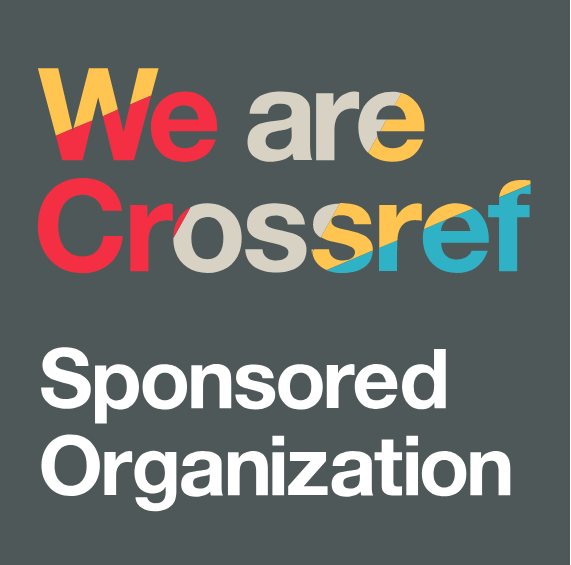Pengaruh Sistem Informasi Terhadap Inovasi Digital, Transformasi Digital, dan Customer Relationship Management (CRM)
DOI:
https://doi.org/10.38035/dit.v1i3.1261Keywords:
sistem informasi, inovasi digital, transformasi digital, customer relationship managementAbstract
Penelitian ini bertujuan untuk membangun hipotesis mengenai pengaruh Sistem Informasi terhadap Inovasi Digital, Transformasi Digital, dan Customer Relationship Management (CRM) yang akan digunakan pada penelitian selanjutnya. Metode penelitian menggunakan studi pustaka (library research) dengan menganalisis sumber-sumber dari e-book dan artikel jurnal open access yang diperoleh melalui Google Scholar, Mendeley, dan media online akademik lainnya. Analisis data menggunakan pendekatan deskriptif kualitatif untuk mengkaji dan mensintesis literatur yang relevan. Hasil kajian literatur menunjukkan bahwa: (1) Sistem Informasi berpengaruh terhadap Inovasi Digital melalui peningkatan kapabilitas teknologi dan pengembangan solusi digital baru; (2) Sistem Informasi berpengaruh terhadap Transformasi Digital dengan mendukung perubahan proses bisnis dan adaptasi teknologi digital; dan (3) Sistem Informasi berpengaruh terhadap Customer Relationship Management (CRM) melalui peningkatan pengelolaan data pelanggan dan personalisasi layanan. Penelitian ini memberikan landasan teoretis untuk pengembangan model penelitian empiris di bidang sistem informasi dan transformasi digital.
References
Ali, H., & Limakrisna, N. (2013). Metodologi Penelitian (Petunjuk Praktis Untuk Pemecahan Masalah Bisnis, Penyusunan Skripsi (Doctoral dissertation, Tesis, dan Disertasi. In In Deeppublish: Yogyakarta.
Ali, H., Limakrisna, N., & Jamaluddin, S. (2016). Model of customer satisfaction: The empirical study at Bri in Jambi. International Journal of Applied Business and Economic Research.
Ali, H., & Mappesona, H. (2016). Build brand image: Analysis Service Quality and Product Quality (case study at Giant Citra Raya). International Journal of Economic Research, 13(8), 3523-3529.
Ali, H., Evi, N., & Hadiyati, H. (2018). The Influence Of Service Quality, Brand Image And Promotion On Purchase Decision At MCU Eka Hospital. Business And Management Studies, 4(1), 87-99.
Bharadwaj, A., El Sawy, O. A., Pavlou, P. A., & Venkatraman, N. (2013). Digital business strategy: toward a next generation of insights. MIS Quarterly, 37(2), 471-482.
Buttle, F., & Maklan, S. (2019). Customer relationship management: concepts and technologies. Routledge.
Chanugane, A., Deshmukh, S. G., & Mohanty, R. (2022). Digital transformation framework for ERP: A grounded theory approach. International Journal of Information Management, 65, 102512. https://doi.org/10.1016/j.ijinfomgt.2022.102512
Fusch, P., Fusch, G. E., & Ness, L. R. (2020). Denzin’s paradigm shift: Revisiting triangulation in qualitative research. Journal of Social Change, 10(1), 19-32. https://doi.org/10.5590/JOSC.2018.10.1.02
Ghasemaghaei, M., & Calic, G. (2022). Assessing the impact of big data on firm innovation performance: Big data is not always better data. Journal of Business Research, 108, 147-162. https://doi.org/10.1016/j.jbusres.2019.09.062
Gioia, D. A., Corley, K. G., & Hamilton, A. L. (2021). Seeking qualitative rigor in inductive research: Notes on the Gioia methodology. Organizational Research Methods, 16(1), 15-31. https://doi.org/10.1177/1094428112452151
Joneidi, S., Nica, E., & Vatamanescu, E. M. (2022). The ethics of AI in empirical management research: A review and recommendations. Journal of Business Ethics, 180, 1-22. https://doi.org/10.1007/s10551-022-05189-9
Kohli, R., & Grover, V. (2008). Business value of IT: An essay on expanding research directions to keep up with the times. Journal of the Association for Information Systems, 9(1), 23-39. https://doi.org/10.17705/1jais.00147
Kumar, V., & Reinartz, W. (2018). Customer relationship management: Concept, strategy, and tools. Springer.
Lemon, L. L., & Hayes, J. (2020). Enhancing trustworthiness of qualitative findings: Using Leximancer for qualitative data analysis triangulation. The Qualitative Report, 25(3), 604-614. https://doi.org/10.46743/2160-3715/2020.4222
Matt, C., Hess, T., & Benlian, A. (2015). Digital transformation strategies. Business & Information Systems Engineering, 57(5), 339-343.
Nambisan, S., Lyytinen, K., Majchrzak, A., & Song, M. (2017). Digital Innovation Management: Reinventing innovation management research in a digital world. MIS quarterly, 41(1), 223-238.
Nambisan, S., Lyytinen, K., Majchrzak, A., & Song, M. (2017). Digital Innovation Management: Reinventing Innovation Management Research in a Digital World. MIS Quarterly, 41(1), 223-238.
Nambisan, S., Zahra, S. A., & Luo, Y. (2023). Global platforms and ecosystems: Implications for international business theories. Journal of International Business Studies, 50, 1464-1486. https://doi.org/10.1057/s41267-019-00262-4
Pappas, I. O., Papavlasopoulou, S., Kourouthanassis, P. E., Mikalef, P., & Giannakos, M. N. (2023). Explaining user experience in mobile gaming applications: An fsQCA approach. Internet Research, 27(2), 292-314. https://doi.org/10.1108/IntR-03-2022-0171
Payne, A., & Frow, P. (2005). A strategic framework for customer relationship management. Journal of marketing, 69(4), 167-176.
Rahimi, R., & Lind, L. (2023). Customer experience management in an omni-channel context: Current state, conceptualization and research agenda. International Journal of Contemporary Hospitality Management, 33(11), 3837-3869. https://doi.org/10.1108/IJCHM-05-2022-0592
Sarker, S., Chatterjee, S., Xiao, X., & Elbanna, A. (2023). The sociotechnical axis of cohesion for the IS discipline: Its historical legacy and its continued relevance. MIS Quarterly, 43(3), 695-719. https://doi.org/10.25300/MISQ/2019/13747
Schatz, D., & Bashroush, R. (2022). Economic valuation for information security investment: A systematic literature review. Information Systems Frontiers, 19, 1205-1228. https://doi.org/10.1007/s10796-022-10224-1
Sebastian, I. M., Ross, J. W., Beath, C., Mocker, M., Moloney, K. G., & Fonstad, N. O. (2017). How Big Old Companies Navigate Digital Transformation. MIS Quarterly Executive, 16(3), 197-213.
Svahn, F., Mathiassen, L., & Lindgren, R. (2017). Embracing Digital Innovation in Incumbent Firms: How Volvo Cars Managed Competing Concerns. MIS Quarterly, 41(1), 239-253. https://doi.org/10.25300/MISQ/2017/41.1.12
Tams, S., Tams, S., & Grover, V. (2022). Organizational use of artificial intelligence for customer service management: The duality of value creation and value capture. MIS Quarterly, 46(3), 1383-1410. https://doi.org/10.25300/MISQ/2022/16366
Tekic, Z., & Willoughby, K. (2022). Configuring intellectual property management for digital transformation: Evidence from Australian firms. Technovation, 102, 102221. https://doi.org/10.1016/j.technovation.2020.102221
Trantopoulos, K., von Krogh, G., Wallin, M. W., & Woerter, M. (2023). External knowledge and information technology: Implications for process innovation performance. MIS Quarterly, 41(1), 287-300. https://doi.org/10.25300/MISQ/2017/41.1.15
Vassilakopoulou, P., & Barreto, J. (2022). Resilient digital transformation of health services: Insights from the implementation of digitally-enabled patient-centered medical homes. Information Systems Frontiers, 24, 1-15. https://doi.org/10.1007/s10796-022-10249-6
Vial, G. (2019). Understanding digital transformation: A review and a research agenda. The Journal of Strategic Information Systems, 28(2), 118-144.
Walsham, G. (2021). Interpretive case studies in IS research: Nature and method. European Journal of Information Systems, 15(4), 320-330. https://doi.org/10.1057/palgrave.ejis.3000589
Downloads
Published
How to Cite
Issue
Section
License
Copyright (c) 2024 Lita Aulia Putri, Hapzi Ali

This work is licensed under a Creative Commons Attribution 4.0 International License.
Copyright :
Authors who publish their manuscripts in this journal agree to the following conditions:
- Copyright in each article belongs to the author.
- The author acknowledges that the DIT has the right to be the first to publish under a Creative Commons Attribution 4.0 International license (Attribution 4.0 International CC BY 4.0).
- Authors can submit articles separately, arrange the non-exclusive distribution of manuscripts that have been published in this journal to other versions (for example, sent to the author's institutional repository, publication in a book, etc.), by acknowledging that the manuscript has been published for the first time at DIT.

























